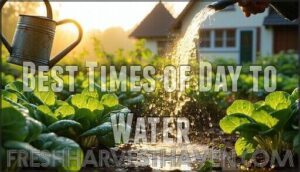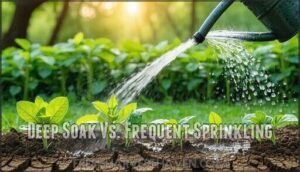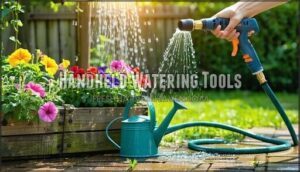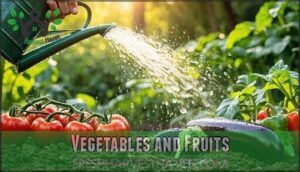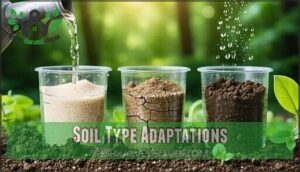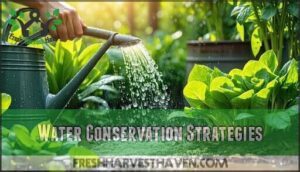This site is supported by our readers. We may earn a commission, at no cost to you, if you purchase through links.

Deep soaking beats frequent sprinkling every time, building stronger roots that can handle summer’s punch.
Mulch cuts water needs by half, and soaker hoses deliver water right where plants need it most. The real key isn’t when you water, but how smart you get about it.
Table Of Contents
- Key Takeaways
- How Often to Water in Summer
- Best Times of Day to Water
- Efficient Watering Techniques
- Watering Different Plant Types
- Water Conservation Strategies
- Top Tools for Summer Watering
- Frequently Asked Questions (FAQs)
- How often should you water your garden in summer?
- What is the 1/2/3/2:1 watering method?
- How often should I water my garden in 90 degree weather?
- What is the best time to water garden in hot weather?
- Why should you water your garden during summer?
- When is the best time to water a garden?
- How do you water a garden?
- How do you maintain a healthy garden during the summer?
- How much water does a garden need a week?
- How often do you water plants in 90 degree weather?
- Conclusion
Key Takeaways
- You’ll need to water 2-3 times weekly with deep soaks rather than daily sprinkling – this builds stronger root systems that can handle summer heat better.
- Check your soil temperature, not just air temperature – when soil stays above 75°F, you’ll need to increase watering frequency to every 2-3 days.
- Water early morning (6-10 AM) to maximize plant absorption and prevent fungal diseases that develop when leaves stay wet overnight.
- Use mulch and efficient tools like soaker hoses to cut your water usage by up to 50% while keeping plants healthier during extreme heat.
How Often to Water in Summer
Summer’s heat means you’ll need to water your plants more often than during cooler months, but the exact frequency depends on your soil type, plant varieties, and daily temperatures.
Most garden beds need deep watering twice a week, while containers might require daily attention when temperatures soar above 85°F.
General Frequency Guidelines
When summer heat kicks in, you’ll want to establish solid watering intervals that keep your plants thriving. Most gardens need about 1 inch of water per week through deep and infrequent watering sessions.
Here are your core watering guidelines for vegetables and optimal plant hydration:
- Check soil moisture 2-3 inches deep before watering
- Water 2-3 times weekly for established ground plants
- Apply water slowly to guarantee proper soil penetration
- Maintain consistent frequency schedules to prevent plant stress
Follow these steps and you’ll give your summer garden exactly what it needs to flourish.
Adjusting for Temperature Extremes
When temperatures climb above 90°F, your watering frequency needs to shift into high gear. Temperature fluctuations and extreme weather create heat stress that forces plants to drink more through increased evaporation.
During these scorching spells, check soil temperature daily and switch from weekly watering to every 2-3 days. This climate resilience approach prevents your garden from becoming a casualty of summer’s fury.
To mitigate the effects of heat on plants, it’s necessary to understand water conservation tips and adjust your watering schedule accordingly.
Signs Your Plants Need Water
Your plants will tell you when they’re thirsty if you know what to look for. Watch for leaf wilting, plant drooping, or soil that’s dry an inch below the surface.
A soil moisture meter takes the guesswork out of watering frequency decisions. Increased transpiration rates during hot days mean faster water stress, so check soil moisture more often when temperatures spike.
Trust your plants—they’re honest about their water retention needs.
Best Times of Day to Water
You’ll get the best results by watering your plants early in the morning when temperatures are cool and humidity is high. This timing lets your plants absorb water efficiently before the day’s heat kicks in, and it gives wet leaves time to dry completely before evening when fungal diseases love to take hold.
Early Morning Benefits
Dawn’s gentle embrace offers the perfect window for watering plants. Water early in the day when morning dew still clings to leaves and soil temperature remains cool.
This timing maximizes plant uptake and water absorption, giving your garden’s early growth phase the hydration it craves. You’ll conserve water while supporting healthy summer gardening habits.
Risks of Midday Watering
When the sun blazes overhead, watering your garden becomes a rookie mistake that’ll cost you. High evaporation rates steal precious water before plants can absorb it, while wet foliage under intense heat creates perfect conditions for fungal issues and foliage burn.
Watering at midday brings three serious problems:
- Water waste – Up to 50% evaporates before reaching roots
- Foliage burn – Water droplets act like magnifying glasses on leaves
- Disease risk – High soil temperature plus moisture breeds fungal problems
Evening Watering Considerations
Evening watering might seem convenient after work, but it’s actually risky for your summer gardening success. Wet leaves overnight invite fungal diseases and pest attraction since leaf wetness lingers for hours.
Your watering schedule works better with morning sessions that prevent water waste and reduce temperature impact on plant stress.
Efficient Watering Techniques
You’ll get the most bang for your buck by mastering three key watering methods that actually work in summer heat. Think of it like choosing the right tool for the job—deep soaking beats light sprinkling every time, while soaker hoses and drip systems do the heavy lifting so you don’t have to.
Deep Soak Vs. Frequent Sprinkling
When choosing between deep soaking and frequent sprinkling, think of watering like building a foundation. Deep and infrequent watering creates strong root development by encouraging roots to grow downward toward moisture.
This watering technique achieves better soil saturation and improves water use efficiency compared to shallow, frequent sessions.
Your summer watering schedule should prioritize soil moisture management through deep soaks twice weekly rather than daily sprinkles for best plant health.
Soaker Hoses and Drip Systems
You’ll love how soaker hoses and drip irrigation transform your summer watering routine. These systems deliver water directly to roots, cutting usage by up to 80% while boosting yields. They’re particularly effective at conserving water in garden beds.
- Soaker hose system installation takes minutes – just connect and lay
- Water pressure stays consistent with pressure-compensating emitters
- Clogging issues remain minimal with proper filtration
- Maintenance tips include seasonal cleaning and timer adjustments
- Cost analysis shows 90% efficiency versus 50-70% for sprinklers
Handheld Watering Tools
When summer heat kicks in, having the right watering gear makes all the difference. A good watering wand can quickly become your go-to tool once those scorching days arrive.
Different handheld watering equipment each brings something useful to the table:
| Tool Type | Best Feature | Summer Advantage |
|---|---|---|
| Watering Wand | Adjustable spray patterns | Reaches hanging baskets easily |
| Traditional Can | Controlled water flow | Perfect for seedlings |
| Hose Nozzle | Multiple settings | Quick coverage for large areas |
Choose ergonomic grips for comfort during long watering sessions. Regular tool maintenance keeps your watering techniques effective all season.
Watering Different Plant Types
Your plants aren’t all created equal with respect to their thirst levels, and treating your thirsty tomatoes the same as your drought-loving succulents is like giving everyone at a dinner party the same glass of water regardless of whether they’re eating soup or crackers.
Treating thirsty tomatoes the same as drought-loving succulents is like giving everyone the same glass of water regardless of what they’re eating
Comprehending each plant’s unique water needs will save you from both wilted disappointments and waterlogged disasters this summer.
Vegetables and Fruits
Your fruits and vegetables demand consistent attention during summer’s heat. Irregular watering triggers blossom end rot in tomatoes and cracked fruit that’ll break your gardening heart.
Here’s what actually works for watering vegetables:
- Apply one inch weekly through deep soaks
- Water at soil level to prevent leaf diseases
- Check soil moisture two inches down daily
- Maintain steady schedule to prevent stress cracks
These summer gardening practices keep your harvest healthy.
Container Plants
Container plants demand your attention like thirsty toddlers. They’ll dry out faster than ground plants, especially in summer heat. Check soil daily by sticking your finger two inches deep.
| Container Size | Watering Frequency | Daily Amount |
|---|---|---|
| Small (6-8") | 1-2 times daily | 1-2 cups |
| Medium (10-12") | Once daily | 3-4 cups |
| Large (14"+) | Every other day | 6-8 cups |
Choose containers with drainage holes and quality potting soil for your container garden success.
Drought-Resistant Varieties
Drought-resistant varieties are your water-saving heroes. These climate-resilient plants thrive with minimal irrigation, making them perfect for water conservation methods.
Select drought tolerant options like lavender, succulents, and native grasses. They’ll slash your watering frequency while maintaining gorgeous gardens.
Smart plant selection means less stress, lower bills, and healthier soil conservation practices.
Soil Type Adaptations
Your soil type determines your watering strategy more than any other factor. Sandy soil drains fast, requiring frequent watering, while clay soil holds water longer but drains slowly.
- Sandy soil needs watering three times weekly with ⅓ inch applications
- Clay soil management requires deep, infrequent soaks of 1-1.5 inches weekly
- Sandy loam tips include twice-weekly ½ inch waterings for balanced drainage
- Organic matter additions boost water retention by 18-35% across all soil types
- Water retention strategies like mulching increase moisture capacity notably
Test your soil drainage and adjust accordingly.
Water Conservation Strategies
You don’t have to choose between a thriving garden and a reasonable water bill this summer.
Smart conservation techniques like mulching, automated controllers, and rainwater collection can cut your outdoor water use by up to 30% while keeping your plants healthier than ever.
Mulching for Moisture Retention
Apply a 2-3 inch layer of organic mulch around your plants to slash water needs by up to 50%. Organic mulches like bark chips or shredded leaves create moisture barriers while regulating soil temperature.
Proper mulch depth prevents evaporation and provides weed suppression without suffocating roots. Keep mulch two inches from plant stems to maintain soil health.
Smart Irrigation Controllers
Technology doesn’t just make watering easier—smart automated systems actually think for you. These controllers watch the weather and check soil moisture in real time, then adjust your schedule accordingly.
- Weather-based controllers reduce water use by 15-35%
- Soil moisture systems achieve 20-40% water savings
- Remote monitoring prevents overwatering
- EPA WaterSense certified models guarantee quality
- Integration with phones provides complete control
Rainwater and Greywater Use
Beyond smart controllers, you can boost water conservation through rainwater harvesting and greywater systems. Set up rain barrels under downspouts for roof collection, creating free irrigation water. A simple rain gauge helps track natural precipitation for better stormwater management. Greywater from washing machines works great for non-edible plants, making water recycling part of your conservation strategy.
| Collection Method | Best For | Setup Cost |
|---|---|---|
| Rain Barrels | Small gardens | $50-150 |
| Greywater Systems | Large landscapes | $200-800 |
| Roof Collection | All plant types | $100-400 |
Top Tools for Summer Watering
You’ll need the right tools to keep your plants thriving when summer heat kicks in.
These five essential watering tools will make your job easier and help you water more efficiently during those scorching months.
Dramm Rain Wand One Touch Valve
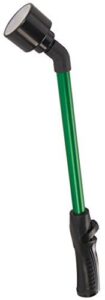
Professional control meets garden simplicity with this fingertip valve technology. Complete water flow control with just one touch of your thumb eliminates the strain from squeezing typical garden hose attachments.
This little upgrade makes a bigger difference than you’d expect:
- Watering precision – Puts complete water flow control at your fingertips for targeted plant care
- Water conservation – Efficiently saves water while moving from one plant to the next
- Comfortable operation – No hand fatigue during extended summer gardening sessions
- Flexible spray patterns – Works with various Dramm watering equipment attachments
Melnor 50 Ft Soaker Garden Hose
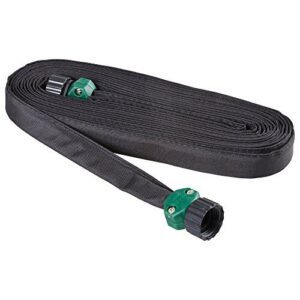
Soaker hose benefits shine with the Melnor’s 50-foot reach, delivering steady water directly to root zones. This summer irrigation system cuts water waste by 70% compared to sprinklers.
The durable hose material quality ensures years of reliable use. Simply lay it between plants, connect to your watering schedule, and let it work its magic for efficient watering system performance.
Coolaroo Wheat Shade Cloth
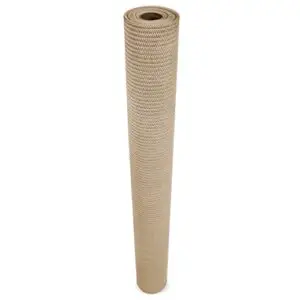
Your garden’s new best friend provides instant relief from the scorching summer sun. Wheat shade fabric acts as garden sunscreen, blocking harsh UV rays while allowing air circulation. This outdoor canopy transforms stressed plants into thriving specimens.
Smart gardeners know shade structures aren’t just comfort items—they’re essential watering strategy tools.
- Reduces water evaporation by up to 50% compared to unprotected areas
- Protects delicate seedlings from heat stress and wind damage
- Extends growing season for cool-weather crops during hot months
Terracotta Watering Spikes and Globes
Terracotta watering spikes and globes offer hands-off watering freedom. These clay pot irrigation systems release water slowly based on soil moisture needs.
Installation is simple—push spikes into soil near plant roots. Water globe systems work perfectly for vacation watering or busy schedules.
The terracotta benefits include natural soil health improvement and consistent garden water conservation without overwatering worries.
Greenhouse Micro Drip Irrigation Kit
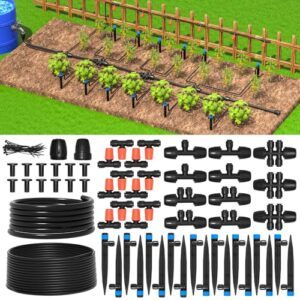
With precision engineering, micro drip irrigation kits transform your greenhouse watering schedule from guesswork into science. These systems deliver water directly to plant roots, reducing waste by up to 50%.
Installation takes thirty minutes—simply connect tubing to your water source and position emitters near each plant.
The drip system maintains consistent soil moisture while preventing fungal diseases that plague overhead watering methods.
Frequently Asked Questions (FAQs)
How often should you water your garden in summer?
Like a thirsty athlete needs consistent hydration, your plants crave regular water during hot months.
Water deeply 2-3 times weekly, giving them about one inch total. Morning watering prevents disease while evening watering reduces evaporation losses.
What is the 1/2/3/2:1 watering method?
The 1/2/3/2:1 watering method involves watering your lawn for 1 minute, waiting 10 minutes, then 2 minutes, waiting 10 minutes, then 3 minutes, waiting 10 minutes, then 2 minutes, waiting 10 minutes, and finally 1 minute to prevent runoff.
How often should I water my garden in 90 degree weather?
Hot days hit hard, but here’s your lifeline: water deeply every other day in 90-degree heat.
Your plants need about one inch weekly, so give them a good soak rather than light sprinkles that just tease their roots.
What is the best time to water garden in hot weather?
Early morning offers the best window for watering your garden during hot weather. You’ll give plants time to absorb moisture before the heat hits, and wet leaves can dry quickly, preventing disease issues.
Why should you water your garden during summer?
Summer’s intense heat stresses plants, making them desperately thirsty. You’ll need to water consistently because hot weather accelerates evaporation and increases plant water consumption, keeping them healthy and productive.
When is the best time to water a garden?
The golden hour for garden watering is dawn, between 6–10 AM. You’ll give plants time to absorb moisture before heat hits, and leaves dry quickly, preventing fungal diseases that love wet foliage overnight.
How do you water a garden?
Watering your garden isn’t rocket science! Use deep, slow soaks twice weekly rather than daily sprinkles. Water early morning so plants dry before evening, preventing disease and maximizing absorption.
How do you maintain a healthy garden during the summer?
Consistent moisture is your garden’s best friend. Water deeply twice weekly and mulch heavily to retain moisture.
Feed plants regularly and water in the morning to prevent disease. Protecting from harsh afternoon sun keeps everything thriving.
How much water does a garden need a week?
Your thirsty garden drinks like a marathon runner on race day! You’ll need about one inch of water weekly, which equals roughly 62 gallons per 100 square feet.
Deep watering twice weekly works better than daily sprinkling.
How often do you water plants in 90 degree weather?
In scorching 90-degree heat, you’ll need to water most plants daily, especially containers.
Check soil moisture first—if it’s dry an inch down, it’s time to water deeply until it drains.
Conclusion
Like a well-tuned orchestra, your summer gardening watering schedule needs perfect timing and technique. You’ve learned that soil temperature trumps air heat, deep watering beats frequent sprinkling, and mulch is your secret weapon against water waste.
Container plants demand daily attention during heat waves, while in-ground plants thrive with twice-weekly deep soaks. Remember to check soil moisture before watering, use efficient tools like soaker hoses, and water early morning for best results.
Your plants will reward smart watering with stronger roots and healthier growth.
- https://www.thrivelot.com/resources/study-seasonal-watering-and-vegetable-growth
- https://www.epa.gov/watersense/when-its-hot
- https://extension.umn.edu/how/watering-vegetable-garden
- https://www.realsimple.com/how-often-to-water-garden-in-hot-weather-11764915
- https://gardenbetty.com/surviving-a-heat-wave-6-hot-weather-watering-tips/

